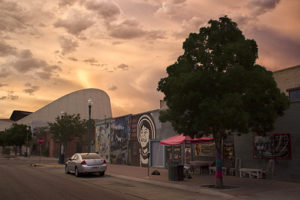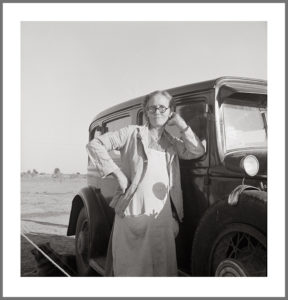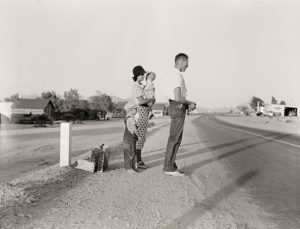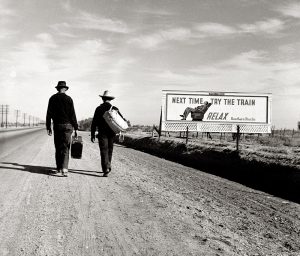DURANGUITO EVENING
GRANDMOTHER ON THE ROAD
NO NET AMERICA
Migrant family on highway, California, 1937
Photograph by Dorothea Lange
Extended Caption: California at Last: Example of self-resettlement in California. Oklahoma farm family on highway between Blythe and Indio. Forced by the drought of 1936 to abandon their farm, they set out with their children to drive to California. Picking cotton in Arizona for a day or two at a time gave them enough for food and gas to continue. On this day, they were within a day’s travel of their destination, Bakersfield, California. Their car had broken down en route and was abandoned.
LANGE AND HER TRANSCRIBED TEXT
MIGRATION 30s STYLE
Ten Children, March 1937, by Dorothea Lange,
for the RA (courtesy of OMCA)
PRE ART LANDSCAPE
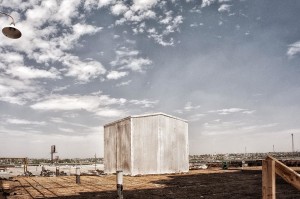
The Pre Art Landscape is one in which there are images only attractive to some’s intellect that titillates the intellect of others who are over educated, over intellectualized, clean from lack of experience with the world that they choose to not touch and where, through their lack of desire to know a world around them other than the one aforementioned, allows them to revere and praise that which is without interest to anyone but them and their ilk.
So here is an image from my Guggenheim Fellowship submission. I created this less than fifteen minutes ago by walking out the back door of my slum loft (yes there are still some around that the yuppies and Julias haven’t occupied and, therefore, chased out those who were living there, not for some feeble concept of what is cool, but because, previously, they could afford the rent if they were willing to put up with the inconveniences and degradations of everything that the word “slum” implies).
If I hadn’t written this piece I very well may have earned a Guggenheim.
I coulda been a contenda…instead of -let’s face it- a bum…which is a what I am…*
I couldn’t resist the rant.
I suspect that’s what has saved my heart’s soul from an early death.
*Thank you Budd Schullberg (http://bit.ly/1KetpPl)
BRIDGE TO SOMEWHERE
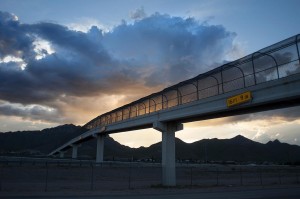
Text and Words by Bruce Berman
The meteorologists call this a “High Pressure system being pushed out by a Low Pressure system.”
Photographers will admit “every once in a while things come together and you get a lucky.”
What do I call it? What does one get for being out there, every evening and every day, always with your “axe (camera)at the ready, often coming home with nothing but the pleasure of having been out there trying?”
The funny thing is, as usual, I was in a part for town I’d never been in before (there are few left). It is a very unusual ‘hood for El Paso. In another city one would call it the “ghetto.” Here, no one thinks there is a ghetto. Being a predominantly latino city (82%), if you have a neighborhood that is lower income, the natural thing is to call it a barrio. This neighborhood was definitely “low income,” and of the three people I conversed with, two had been drinking alcohol to the point of inebriation. It is a mostly Black neighborhood, unusual in El Paso that is only 4% African-American.
Susan Meiselas on The Engaged Photographer
Editor’s note: Susan Meiselas, Magnum Photographer and long time great documentarian, discusses documentary photography, motivations, uses, intentions and hopes for the work’s impact on subjects and society.
This project, funded by the Open Society Foundations (Meiselas Co-Curated the project’s exhibition), shows the work of some of the world’s best contemporary photographers working in this discipline.
Chavez Ravine Back In The Day
Bridesmaids and best man at a wedding in Chavez Ravine, 1929.
Courtesy of the Shades of L.A. Collection, Los Angeles Public Library


